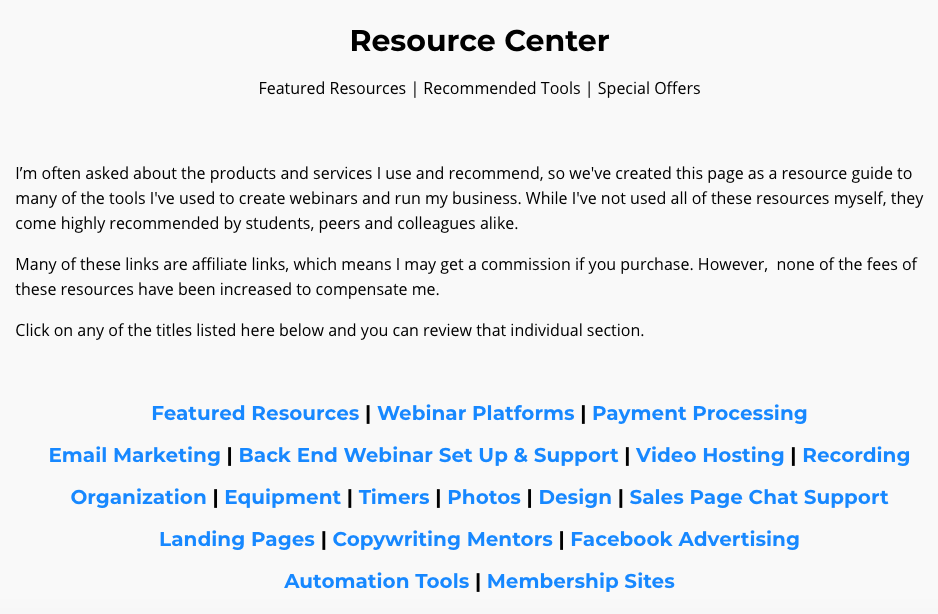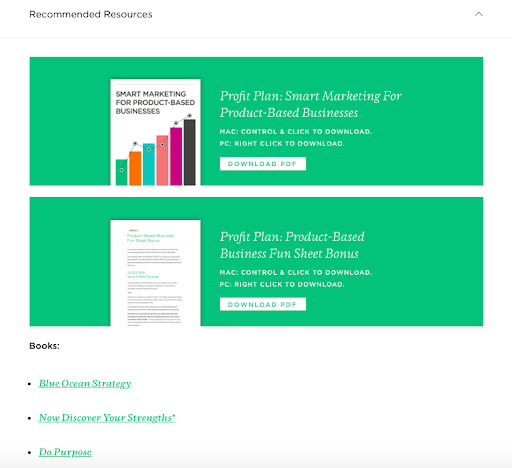
You’re blushing. Your heart is skipping beats and you’re feeling kind of warm. You’ve just finished half a bowl of chicken chow mein from Panda Express, but you're suddenly feeling lighter…hungrier?
You're not sure. But you're feeling things you've never felt before, and you're feeling them deeply.
Because you’ve just read a freakin’ stellar review of your online course.
You know, the one you spent half a year creating before finally launching.
The one that kept you up late into the night, agonizing over how much content was too much content and whether your videos were short enough.
The one that wouldn’t sell for weeks – until it finally did – and now you’ve got your first online course review. And it’s good. It’s really good.
They like you, they really like you!
And now it’s like you’re suddenly validated. Suddenly, you’re a real, accomplished and accredited professor, and you find yourself saying, “See? I DO know my sh*t!”
We can all relate to this feeling. The struggle is real for online course creators these days. When we get glowing reviews, not only does it make us feel super good inside, but there’s a chance other students will see it as well, and feel compelled to invest.
However, if you're looking for rave online course reviews, first you need to make sure you’re creating a course to rave about.
Today, we’re discussing 12 steps you can take in your online course right now to get great reviews from your students.
We read over a hundred five-star course reviews across different categories like Business, Tech, and Personal Development, and narrowed down what students loved most about the online courses they gave five stars to.
We also asked some of the most successful online instructors out there how to implement some of the steps we're covering. That way you can start putting these steps into action.
Step 1: Make Sure Your Course Uses Simple, Clear Explanations

One of the most important things you can offer your students in an online course is understanding. It’s easy enough to say, “Make sure your course is easy to understand,” but actually doing it is tough.
One of the most recurring comments we saw in 4.5- to 5-star online course reviews was that students loved courses that were broken down for easier understanding.
If you’re trying to make your course simple and easy to follow, ask yourself the following:
- Is this a beginner, intermediate, or advanced course?
- Am I using the correct jargon associated with my target audiences’ level of learning?
- Am I breaking down complex topics into simple steps?
- Is there any way I can be more detailed on the information I’m sharing?
The more detailed you can be, the better. Even in advanced online courses, it’s good to reference resources that might be helpful to people in lower levels of learning, and explain things as best as you can.
Basically, students are just like…

How the Experts Do It: Sean Kaye, a Udemy instructor who teaches SEO for beginners, has a ton of five-star reviews – in fact, over 65% of his online course reviews gave five stars, with an overall course rating of 4.7.
On keeping your course simple and easy to follow, he recommends keeping your videos and lectures short, and a lot of other experts, like the team from Thinkific, agree. These make each lesson easily digestible for your students.
Thinkific recommends 2-7 minutes per video lesson. If you have longer videos, you can always break them up to help your student grasp larger, complex topics.
Step 2: Be There for Your Students

By and large, students want to see you and they want help from you when they buy your online course. The importance of being an active participant in your online course cannot be understated. Courses just don’t work well in a vacuum.
It’s one thing to give your students a bunch of lessons and resources, but inevitably, they’re going to have questions about their specific situations, and they’re going to look to you for guidance. And unfortunately, if you’re not there to give this to them, they’ll let you (and everyone else) know in their online course review.
And at the end of the day, why wouldn’t you want to be more involved? Yes, courses are a way to bring in passive income daily, but there are some courses that require additional guidance, and sometimes students need more than just a community to get that.
Some ways you can be an active participant are:
- Hold live Q&A coaching calls. These are great because you can have students submit their questions ahead of time, and you can answer them live once a week.
- Leave feedback on their projects or assignments. This is a great way to show them that you’re monitoring their progress, and helping them get better at the craft you’re teaching them.
- Be reachable. Make your contact info (or support info) available for questions students will inevitably have outside of office hours or Q&A sessions.
- Be responsive. Be timely in your responses. If possible, try to get back to student inquiries within 24 hours.
Students are immensely appreciative of your presence. It sometimes takes guts for students to ask questions, for fear of them sounding “dumb” or “stupid”.
Be reachable and responsive for them when they need you. People love to be serviced and have their needs met in a timely fashion. It’s one of the first things they talk about in their online course reviews, and it’s an easy win.
How the Experts Do It: Amy Porterfield, my favorite online marketing expert, has made over six million dollars with her online courses. She has thousands of students, and she houses them all in a single Facebook Insider’s group.
Because it would be impossible to engage with every single one of her students, she holds a weekly Facebook Live Q&A inside of her Facebook group. She asks her students to ask her questions in a Facebook post a couple of days before the Facebook Live, and then she answers them live.
I’ve also seen Ray Edwards do something similar in his Copywriting Academy course. Instead of doing a Facebook Live every week, he holds a coaching call students can jump on every week, where he’ll answer any questions they have about his course.
Making yourself available to your students is one of the best ways to show them you care. If you want glowing course reviews and word-of-mouth referrals to your course, make sure you’re not “setting and forgetting” about students who may need a hand to hold as they walk through your course.
Step 3: Be Patient and Detailed

Another thing students appreciate (and mention a TON in their online course reviews), is your patience in detailing things that are hard.
Not everyone who takes your course will be at the same learning level, regardless of whether your course is labeled as beginner, intermediate, or advanced. You’ll always get students from all types of backgrounds.
Be patient and detailed in your explanations. Students appreciate when you go slow enough for them to understand, and they appreciate it when you don’t expect them to know everything off the bat.
How the Experts Do It: Christian Barin, a Photoshop teacher at Udemy with tons of great reviews, says he often uses a teaching assistant to help out when some students need more time or further explanation. However, he says he still does the bulk of the work.
“It’s all about setting expectations,” he says. He lets them know how to watch his courses so they get the most out of them. “I tell them to watch twice: once without interruptions, and a second time by pausing as often as you need to.”
By setting expectations, you’re letting the student know how to watch your course so they can get the most out of it at whatever learning level they’re at.
Step 4: Create Challenging Projects & Exercises That Will Help Them
Students feel like they’re getting their bang for their buck when they actually learn something. And for them to actually learn something, they have to do something.
Challenge them. Give them projects and exercises that will help them apply what you teach in a way that will cement their learning. Students will be impressed with your dedication to helping them learn a concept if you give them the kind of exercises that allow them to put into action the tools or framework you’re teaching.
Especially if it gets them out of the comfort zone of doing nothing. It’s one thing to give them a small quiz at the end to test their learning, but it’s another to give them an actual project they have to use your tools to build, and one that they can share with other students for feedback.
How the Experts Do It: Marie Forleo offers some pretty challenging assignments in her online course, B-School. She provides a fun sheet at the end of each lesson, but the questions aren’t just thrown together for the sake of offering an assignment – they are truly meant to get you thinking.
Part of her assignments involve going out and actually doing things, like interviewing your ideal customers to discover their pain points. The questions in her fun sheet are also the right ones to get you in the right mindset to create your offerings, build your email list, and serve potential customers.
If part of your assignments get people out of their comfort zone, it’s a good thing. That’s where the real learning is!
Step 5: Really Know and Be Passionate About Your Content
Students are great at sniffing out how knowledgeable you are in your field. In fact, I think a lot of newbie course creators are probably held back a bit by the idea of not being expert enough to teach people something.
But you don’t have to be a PhD to teach an online course, you just have to be two or three steps ahead of the people buying from you. So own your knowledge on your topic. Make sure it comes off in your course, because students will be able to tell if you can really help them.
Also, take a step further and be passionate about what you teach. If students can tell that you really love what you’re talking about, this bodes well with them. They’re more likely to share your passion for what you teach in their course review. It makes them feel safe when they know you’re teaching your course for the right reasons.
How the Experts Do It: “Make sure you do the research on your topic and put yourself in your students’ shoes,” says Daniel Boehm, a Udemy instructor who has over 1,500 reviews on his blog blueprint course – over 50% of them five-star.
“See if the course you’re creating will actually help move them in the direction they want to go. I know that sounds really cliche, but it’s really the main thing to keep in mind.”
Daniel has 11 courses on Udemy, including one on successful course creation on the platform.
Step 6: Make Sure Your Course is Sequenced Logically and Easy to Navigate

This is an easy one – make sure your lessons are well-connected. If you’re teaching people how to bake a cake, don’t tell them how to put the cake in the oven before you’ve taught them how to add the egg and the flour.
That is a terrible example, because it’s just obvious you wouldn’t do that, but you get what I mean.
One thing that leads to rave online course reviews is your ability to keep students from feeling lost or confused at every touchpoint possible. You want to not only lead them through your course in a logical way, but you also want to make sure they can easily navigate around your platform.
Make it easy for them to find the resources for each lesson, and to see which lesson they’re supposed to watch next. Make the technology easy, reliable, and fully supported in all major browsers. You’d be surprised how important course structure and navigation are to students, and it’s one of the things they reference most in their reviews.
Luckily, most online course platforms out there today make it easy to structure and access your course in an easy way. Some of them are: Thinkific, Kajabi, and Teachable.
How the Experts Do It: Teachable, an online course platform, says the best way to create your course so it’s sequenced logically is to start with the transformation you’re bringing the student.
Once you know that, you can start to work backwards and create the exact steps a student would need to get them to that transformation. Make sure to really put yourself in the student’s shoes when you’re creating your steps. Otherwise, it’s easy to forget that there are certain steps you need to take to do what you teach (since you’re so expert at it now).
Those steps can then become your lessons, and if you wrote them down in the exact way it took you to learn what you’re teaching, they should be sequenced in a logical way for your students.
Step 7: Have Good Pacing
I’ve seen course creators use pacing in different ways.
Marie Forleo releases modules one week at a time in her signature course, B-School. She also allows one week without new content for implementation, after about four weeks.
I’ve also seen courses where you can’t move on to the next lesson until you’ve passed the previous lesson’s quiz.
These are good examples of pacing, if you want to make sure your students are completing your course sequentially. It also gives them a chance to immerse themselves in each module, and actually understand it, before moving on.
Some tips for good pacing:
- Don’t rush through your lessons.
- Speak slowly, so your students can understand you.
- Don’t move on to the next lesson until you’ve provided all of the requisite information.
- Teach at the pace you learned the subject matter at.
How the Experts Do It: Catherine Dove, who offers training and coaching to course creators at Digital Business Boutique, says a great way to bring pacing into your courses is to teach only what your students need to obtain their desired result.
“When we create an online course, it is NOT about transferring all of our years of expertise to our students. In fact, it is the exact opposite! Our students are looking for a desired outcome. Nothing more, and nothing less!”
To do this, she says, “We need to be very diligent about creating a step by step process that they can go through in our course. This can be done by creating a course outline. This ensures that you not only have covered every single step, but that you have omitted the ‘nice to know' content that can cause overwhelm. Doing so will ensure that your students can complete our courses as quickly as possible, and enjoy the desired outcome.”
Step 8: Create a Community Around Your Course

Creating a community around your course is something most course creators do these days, but it bears reminding.
Students need a place where they can interact when they have questions. This lessens the amount of questions you might get via email as well, since students have a community to fall back on.
It also gives students a chance to see how other students are completing the assignments, in case they are having trouble.
It does require some extra support help, but it helps students feel incredibly supported throughout their learning journey, especially since taking courses online can be a more isolating experience.
How the Experts Do It: So many successful course creators out there use Facebook to create and manage their student communities, but at the end of the day, it depends on your specific students’ wants and needs. If many of them are on Facebook, use Facebook.
Jessie Hayden, an instructional designer and Founder of Changemaker Designs, mentioned in the Thinkific Facebook group recently that “highly successful online courses provide students with opportunities to collaborate.” She recommends Padlet as a tool for course discussion boards and collaboration.
There’s a lot of different tools to use for creating a community around your course. The main goal though, is to make sure it works for your specific students, and that they are all easily able to use it to help them progress through your course effectively, while getting the help they need.
Step 9: Provide Resources for Further Study Outside the Course
A great way to help your students learn and stay interested is to give them outside learning resources for further study.
Students love the ability to take what you’re teaching one step further, because it can only help them. They also love to hear about relevant books or websites you’re reading. They want to become as knowledgeable as you are on the topic you’re teaching them.
Going the extra mile of sharing resources for students to learn outside of your course is one more thing they rave about in online course reviews. They always appreciate any extra help they can get.
How the Experts Do It: Amy Porterfield and Marie Forleo both do this in their courses.
In Webinars That Convert, now Digital Course Academy, Amy provides an entire section called Resources, where she lists all of the additional tools or software you can use to complete the tasks in her course. She even has some tools where if you purchase them through her, you can get a discount.

Marie Forleo also offers a list of resources in B-School at the end of each module for further, outside learning.

Step 10: Keep Your Course As Up to Date As Possible

Over time, your course will need an update. This is especially true for courses in technology and marketing, because things change almost daily.
Make sure that you’re taking the time to update your course with the latest screenshots or training. If a new student signs up for your course and notices that some of your training is outdated, they’re not going to feel like they’re getting the best learning experience. And they may even be unable complete the assignments you’re giving them, since interfaces in different software platforms are being updated all the time.
Personally, I almost didn’t buy a course because I couldn’t get an answer from the instructor about whether or not it was updated regularly. So at times it can also be a barrier to purchase. Be sure to include in your sales pages that you’re keeping your courses updated, if you are. It's a good selling point.
How the Experts Do It: When I asked the Thinkific Facebook group how they keep their courses up to date, professional blogger and successful course creator Melissa Culbertson of Blog Clarity said she updates her courses every six months.
“I take notes throughout the year of things I want to update or change and unless it's something urgent, I wait until the six-month mark. I definitely don't create everything in video which makes it easier but sometimes we do have to re-do videos.”
Step 11: Make it Actionable
This is probably one of the most important steps in getting rave online course reviews – make the content in your course as actionable as possible.
There’s just no point in teaching something that doesn’t let your students take action in some way. Plus, your students will let you know if it doesn’t. There are some harsh course critics out there, and this is something they will be vocal about in their reviews.
After every lesson in your course, ask yourself whether there is something the student can immediately put into action. Ask yourself whether the homework is actionable and whether the action steps you’re giving them can lead to actual results.
You want them to leave reviews that let other students know your course was worth every penny.
How the Experts Do It: On being actionable, Sean Kaye (a Udemy instructor we mentioned earlier) recommends putting a valuable piece of actionable information in the first 5-10 minutes of your course.
Most people don’t think to do this, but it's actually the best place to leave something actionable. It’s where your students are the most inspired and excited about your course. If you can make even your introductory video actionable, it gives them a great impression of you right off the bat.
Pro tip: Make your free stuff especially actionable, and you will have raving fans for life.
Step 12: Make Your Course Free (or Super Cheap) At First

This is the easiest way to tell if your course will get good reviews.
If you have a course you plan to sell, offer it for free to a few people first. This way you can see how they like it. If the majority of people love it, you'll have confidence when you start your sales and marketing process. But you’ll also be able to use those reviews on your course page.
There’s also the very high likelihood that your paid students will leave just as much positive feedback, if you already got a ton on your free course.
How the Experts Do It: I reached out to Kevin Breeze about this, a Udemy instructor with nearly 7,500 students, who teaches people how they can become successful product reviewers on YouTube.
He said, “When I first created my course, I offered it as a free course. Then after it accumulated a decent amount of positive feedback, I switched it to a paid course.”
One of his biggest struggles, he said, was wanting his course to be perfect the first time around.
“That resulted in me procrastinating. I later realized that courses are never going to be perfect and I really just needed to get it published without worrying about the small details. One of the great things about online courses is that they can always be modified and improved based on the needs of the students.”
Publishing your course for free first is a great way to get positive feedback. It also helps you fix things students have trouble with early on. With five-star course reviews by over 50% of the students who reviewed his course, I’d say he’s on the right track.
Summary
In order to get great reviews for your online course, make sure your online course is something to rave about.
After pouring through nearly 100 online course reviews, these are the main things students rave about most:
- Use simple, clear explanations. Double check that you are breaking down complex topics into smaller steps and using the correct jargon.
- Be an active participant. Courses don’t work well in a vacuum. Be reachable, hold live Q&A calls, and leave feedback on their assignments.
- Be patient and detailed. Let students know how to go through your course. This way they'll get the most out of what you’re teaching them. Make sure they don't speed through it, missing certain points and blaming you for not being more thorough.
- Make sure to challenge your students. Help them apply what you’re teaching where possible. Get them out of their comfort zone.
- Be knowledgeable and passionate about your topic. Students will be able to tell if you’re not enjoying what you’re teaching, and if you don’t know your stuff.
- Make sure your course is sequenced logically. Start with the transformation you’re bringing your students and work backwards. This way you're not leaving out any steps in what you teach.
- Watch your pacing. Don’t rush through your lessons, speak slowly, and teach only what they MUST know to reach their desired outcome.
- Create a community for students to interact with one another. Make sure students feel supported on their learning journey. Try Padlet for course discussion boards and collaborations.
- Provide resources for further study outside of your course. Going the extra mile will not go unnoticed by your students and can lead to really genuine online course reviews.
- Keep your course up to date. Try updating it every six months if possible, but this will vary on your subject and how often information changes.
- Make sure your course information is actionable. After every lesson, ask yourself if there is something students can immediately put into action.
- Make your course free (or super cheap) at first. This allows you to get feedback early. If it’s negative, you’ll know what to fix before more students get access. This way you can stop negative reviews before they start.
Are your students leaving reviews about your course? Are they mostly positive or negative? Do you think you’ll implement some of the steps above to get better reviews? Let me know in the comments!

Pingback: About to Launch an Online Course? Answer These 10 Questions First
Pingback: Why Online Course Creators Should Proofread Their Course (Twice)